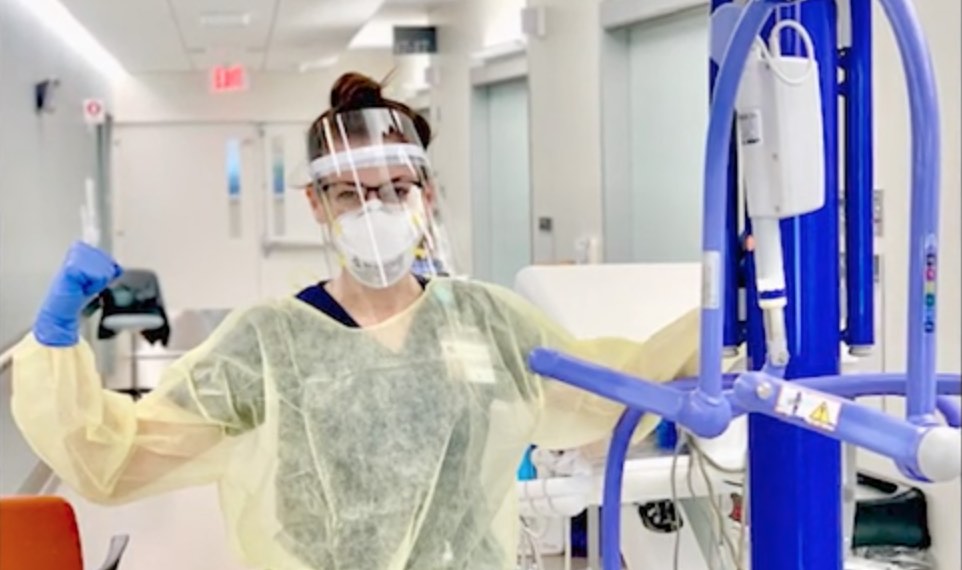Nebulized antibiotics effective for ventilator-associated pneumonia
Reuters Health • The Doctor's Channel Daily Newscast
April 21, 2011 • Critical Care, Infectious Diseases, Nurses/NP/PA, Pulmonary Medicine, Reuters Health • The Doctor's Channel Newscast
NEW YORK (Reuters Health) – Ceftazidime and amikacin delivered by nebulizer is as effective as intravenous administration in treating ventilator-associated pneumonia (VAP) caused by Pseudomonas aeruginosa, and is less likely to lead to the emergence of antibiotic resistance, according to the results of a French study.
As the researchers explain in the American Journal of Respiratory and Critical Care Medicine online April 7, nebulization of antibiotics in experimental inoculation pneumonia produces high lung tissue concentrations, and rapid bacterial killing.
For a phase II clinical study of this strategy, Dr. Jean-Jacques Rouby, with Hopital Pitie-Salpetriere in Paris, and colleagues randomized 40 patients with VAP caused by susceptible or intermediate strains of P aeruginosa to nebulized or intravenous therapy with ceftazidime and amikacin. An exception was made for three patients with intermediate P aeruginosa in the IV group, for whom amikacin was replaced with ciprofloxacin.
Rates of successful treatment at 8 days were not significantly different in the aerosol and IV groups, at 70% versus 55%, respectively (p=0.33), according to the report.
In the aerosol group, any strains of P aeruginosa isolated at day 9 were all susceptible to ceftazidime and/or amikacin, whereas 4 of 5 isolates in the intravenous group “had become intermediate or resistant to either ceftazidime or amikacin,” the investigators found.
Changes in lung aeration on CT assessment were not different between the nebulization and IV groups; increases in gas volume were 159 vs 251 mL, and decreases in tissue volume were -58 vs -89 mL, respectively.
Nebulization caused an obstruction in the expiratory limb of the respiratory circuit in three instances. This led to sudden cardiac arrest in one patient, who had a full recovery after prompt CPR.
“Nebulization and intravenous infusion of ceftazidime and amikacin provide similar efficiency in terms of clinical cure of VAP caused by susceptible P aeruginosa,” Dr. Rouby and colleagues conclude. Furthermore, nebulized delivery “may prevent the per-treatment emergence of resistant strains.”
However, they caution, “These benefits are obtained only if conditions of nebulization are optimized and adverse events such as obstruction of the expiratory filter are detected early enough. A large multicenter randomized trial is required to determine whether these potential benefits outweigh the risks of serious adverse events in patients with P aeruginosa ventilator-associated pneumonia.”
Reference:
Nebulized Ceftazidime and Amikacin in Ventilator-associated Pneumonia caused by Pseudomonas Aeruginosa
Am J Respir Crit Care Med 2011.
As the researchers explain in the American Journal of Respiratory and Critical Care Medicine online April 7, nebulization of antibiotics in experimental inoculation pneumonia produces high lung tissue concentrations, and rapid bacterial killing.
For a phase II clinical study of this strategy, Dr. Jean-Jacques Rouby, with Hopital Pitie-Salpetriere in Paris, and colleagues randomized 40 patients with VAP caused by susceptible or intermediate strains of P aeruginosa to nebulized or intravenous therapy with ceftazidime and amikacin. An exception was made for three patients with intermediate P aeruginosa in the IV group, for whom amikacin was replaced with ciprofloxacin.
Rates of successful treatment at 8 days were not significantly different in the aerosol and IV groups, at 70% versus 55%, respectively (p=0.33), according to the report.
In the aerosol group, any strains of P aeruginosa isolated at day 9 were all susceptible to ceftazidime and/or amikacin, whereas 4 of 5 isolates in the intravenous group “had become intermediate or resistant to either ceftazidime or amikacin,” the investigators found.
Changes in lung aeration on CT assessment were not different between the nebulization and IV groups; increases in gas volume were 159 vs 251 mL, and decreases in tissue volume were -58 vs -89 mL, respectively.
Nebulization caused an obstruction in the expiratory limb of the respiratory circuit in three instances. This led to sudden cardiac arrest in one patient, who had a full recovery after prompt CPR.
“Nebulization and intravenous infusion of ceftazidime and amikacin provide similar efficiency in terms of clinical cure of VAP caused by susceptible P aeruginosa,” Dr. Rouby and colleagues conclude. Furthermore, nebulized delivery “may prevent the per-treatment emergence of resistant strains.”
However, they caution, “These benefits are obtained only if conditions of nebulization are optimized and adverse events such as obstruction of the expiratory filter are detected early enough. A large multicenter randomized trial is required to determine whether these potential benefits outweigh the risks of serious adverse events in patients with P aeruginosa ventilator-associated pneumonia.”
Reference:
Nebulized Ceftazidime and Amikacin in Ventilator-associated Pneumonia caused by Pseudomonas Aeruginosa
Am J Respir Crit Care Med 2011.









